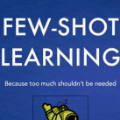Object recognition in the real-world requires handling long-tailed or even open-ended data. An ideal visual system needs to recognize the populated head visual concepts reliably and meanwhile efficiently learn about emerging new tail categories with a few training instances. Class-balanced many-shot learning and few-shot learning tackle one side of this problem, by either learning strong classifiers for head or learning to learn few-shot classifiers for the tail. In this paper, we investigate the problem of generalized few-shot learning (GFSL) -- a model during the deployment is required to learn about tail categories with few shots and simultaneously classify the head classes. We propose the ClAssifier SynThesis LEarning (CASTLE), a learning framework that learns how to synthesize calibrated few-shot classifiers in addition to the multi-class classifiers of head classes with a shared neural dictionary, shedding light upon the inductive GFSL. Furthermore, we propose an adaptive version of CASTLE (ACASTLE) that adapts the head classifiers conditioned on the incoming tail training examples, yielding a framework that allows effective backward knowledge transfer. As a consequence, ACASTLE can handle GFSL with classes from heterogeneous domains effectively. CASTLE and ACASTLE demonstrate superior performances than existing GFSL algorithms and strong baselines on MiniImageNet as well as TieredImageNet datasets. More interestingly, they outperform previous state-of-the-art methods when evaluated with standard few-shot learning criteria.
翻译:现实世界中的物体识别需要处理长尾目甚至开放的数据。 理想的视觉系统需要通过一些培训实例,可靠和同时有效地认识人头视觉概念, 可靠和同时了解新出现的尾部类别。 等级平衡的多发学习和少发学习解决了这一问题的一面, 要么学习强大的头部分类器, 要么学习低发分类器, 学习尾部微发分类器。 在本文中, 我们调查通用的微片学习( GFSLL) 问题。 部署期间需要一种模型来学习尾部类别, 并同时对头类进行分类。 我们建议使用 CLASCACSIS SynThes LEAning( CASTLL), 一个学习框架, 这个框架可以有效地将校准的少发分数分类器与多分解器的多分解器一起合成。 作为结果, ACSASTALL 的高级标准, 可以将GFSAS-LFAS- LL 的成绩与SISL AS- clasticl 标准有效展示。



